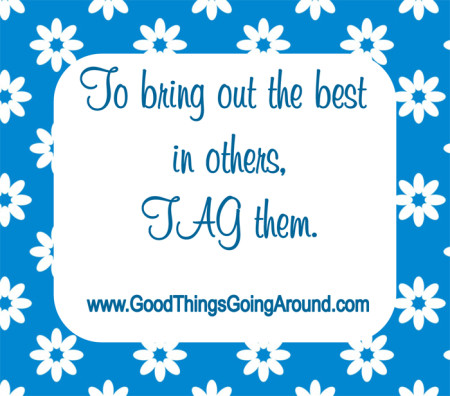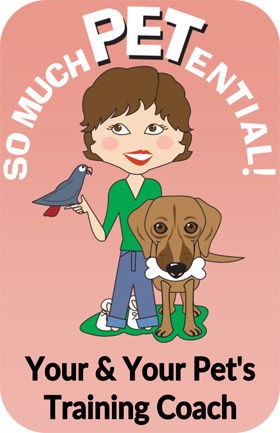clicker training
TAGteaching Brings Out The Best In People
A few weeks ago, I was among the more than 500 dog trainers who convened on Dearborn, Michigan for three full days of non-stop learning about teaching animals in the most positive way. It was the Karen Pryor Academy ClickerExpo and it was phenomenal.
If you are unfamiliar, in its most simplified description, clicker training is a positive reinforcement based training strategy that involves ‘marking’ the very specific ‘wanted’ behavior with a click (or can be a word or other signal), that is immediately followed by a reinforcing consequence. Initially the animal learns to associate positive outcomes by  associating treats, tug time, or whatever other behavior strengthener you use with the sound of the clicker (classical conditioning), and then the animal learns to intentionally repeat a behavior in order to get that positive outcome (operant conditioning). I have information on in So Much PETential blog on clicker training basics.
associating treats, tug time, or whatever other behavior strengthener you use with the sound of the clicker (classical conditioning), and then the animal learns to intentionally repeat a behavior in order to get that positive outcome (operant conditioning). I have information on in So Much PETential blog on clicker training basics.
So, why am I writing about that here? Well, clicker training and operant teaching is not just about bringing out the best in our non-human companions. When thoughtfully used, it brings out the best in people too.
At the ClickerExpo, we were each given tickets and told to TAG someone when we saw them doing something good. When we TAGged someone, we entered his/her name and our own name in a bowl; and each day there were drawings for prizes. It was neat to see how that bowl filled during the weekend event. The more we practiced focusing on finding those reinforceable moments, the more of those moments we found.
Among the behaviors I was TAGged for were asking a woman if her dog would be okay with me walking past it (in the row of seats), helping a woman in a training exercise, and asking questions of one of the instructors.
I’ve got to say, each time that I was TAGged and each time I TAGged someone, it brought a smile to my face. Did TAGteaching make me learn more that weekend? Make me more open to meeting new people? Make everyone more positive with feedback and more welcoming as a whole?
Well, I can tell you that it was most definitely an environment where I strengthened my skills and added to my knowledge and I always knew I could walk into a room of people I did not know and feel welcome.
When it comes to animal training, I have written this reminder in my pet blog numerous times:
Remember, to teach in the most positive way, we need to empower our students
by allowing them to make their own choices – just making the choices we want them
to make the most valuable for them; we need to teach with clarity; we need to set
the learning environment up so that our student will be motivated to want to learn; and we need
to be willing to be patient, teaching those foundation skills and building difficulty only
as our student can continue to succeed.
But this does not just apply to training non-human animals. All of us perform better when we have clarity in purpose, are empowered and reinforced for good choices and good behavior.
My thought to leave you with is this: What are people around you doing that you would like to see more of? How will you let them know they did something great?
Dog Training – Putting The Unwanted Behavior On Cue
NOTE: I have a new pet behavior blog located at http://www.SoMuchPETential.com/blog. Thanks!
I found this video on YouTube posted by trainer Donna Hill, whose background includes a degree in zoology and a teaching degree, and over 20 years experience as an educator and trainer. What I love is her positive approach to working with people and their animals.
This video demonstrates how instead of punishment, first rewarding for the unwanted dog behavior and then putting it on cue is an effective approach that not only serves to teach but also serves to strengthen your relationship and enhance quality of life for your dog.
Below is Donna’s description from Youtube of the how and why of her dog training tactic of putting an unwanted behavior on cue.
Lucy developed an annoying habit of jumping up at the food dish as I carried to the back door. I wanted to get rid of it but for the longest time I was afraid to put it on stimulus control (on cue) as I worried she might do it more often instead of less often (add it to her repertoire).
I decided it couldn’t get much worse and so tried putting the unwanted jumping behavior on cue. These are the steps we did and the outcome. I had a pleasant surprise by the end of training.
Generalizing the new cue out of context first was important so she had a strong understanding of what I was looking or before I ever re-paired it with the food dish.
Training for stimulus control works on behaviors that are (ideally) not self-reinforcing but may also work on some that are, depending on the severity of arousal level and how controllable the environment is. (It may work on some barking if the dog is still able to acknowledge/respond to you but may not if the dog is frantic when barking in the situation). Arousal level and awareness of their own behavior is key. If you can control the environment (move the person or dog that triggers barking) further away so the animal’s arousal level is lowered, success will be greater. Then you can increase the level again, no different from training an animal to function amid distractions. In this case, the trainer can control the key aspect of the behavior, – the value of the food. Start with a lower value food then as the dog shows she can control herself, increase the value of it while using the cue. In this case, I put cheese in the bowl and worked our way up to what she considered more valuable as she succeeded.
Considering the definition of ‘self-reinforcing’ is important as well. Laying down can be self-reinforcing if the dog is tired of standing. This approach is often used in training horses. Stopping for a rest after trotting for a time is self-reinforcing for horses.
Part of the definition of ‘stimulus control’ not often acknowledged is that the animal only does the behavior when cued-DURING TRAINING SESSIONS. This does not mean the animal cannot do it when the trainer is not interacting with it. Take the case of sit or down on cue. If they are under stimulus control, during a training session the dog will only do these if cued. However, when not in a training session, the dog is free to sit and lay down whenever she wants to.
The same applies to barking etc. If the trainer starts interacting with the animal, it should stop doing the behavior unless cued to do so. However, for some behaviors, it is also helpful to train an ‘off switch’ cue such as “quiet” that is paired with ‘bark’.
Donna’s website is: www.onlineclickertraining.blogspot.com














